
On March 26, 1931, Swissair (Schweizerische Luftverkehr AG "Swissair, Swiss Air Transport") was founded through the fusion of the airlines Ad Astra Aero (founded in 1919) and Balair (1925). In contrast to other airlines, it did not receive support from the government.On April 17, 1932 Swissair bought two Lockheed Orions, making them the second European airline to use American planes. The Orion was the fastest commercial airplane of its time and was put to use on the "Express line", Zurich-Munich-Vienna. This led Lufthansa to ask for a model that could top the Orion's speed, leading to the Heinkel He70. In 1933, the first trans-Alpine route was introduced in 1933: Zurich-Milan.
For the first time in Europe, flight attendants were employed aboard the Curtiss Condor in 1934. Nelly Diener, was the first flight attendant of Europe, became world-famous. She lost her life after just 79 flights in a crash near Wurmlingen, Germany, on July 27, 1934.
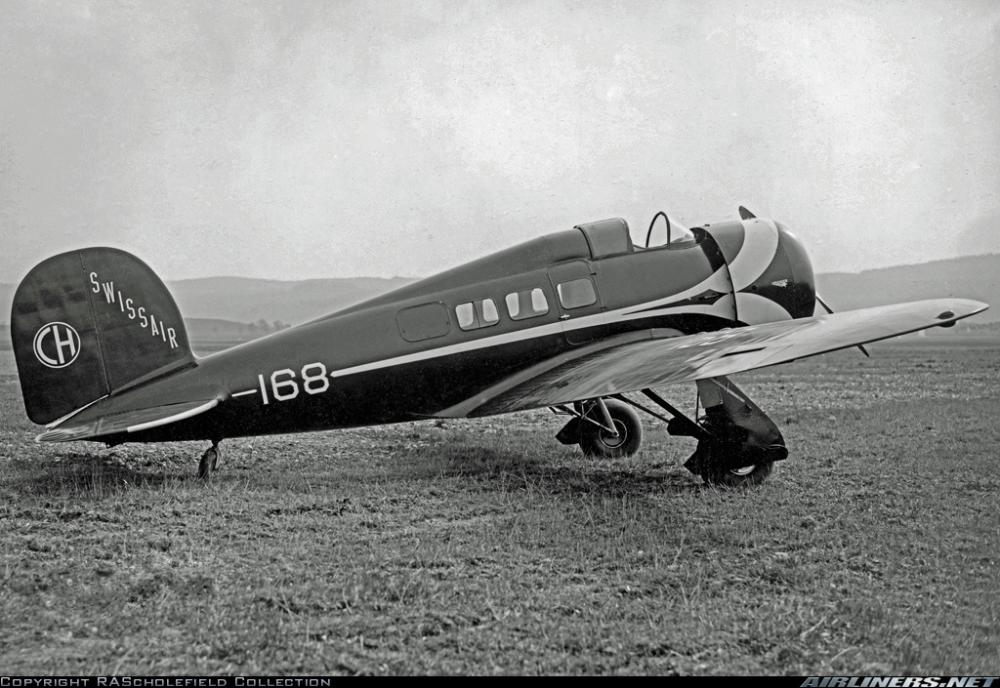
In 1936, Douglas DC-2s were acquired and London was added to the route network. In 1937, the bigger Douglas DC-3 was bought. On August 27, 1939, days before World War II broke out, the airspace over Germany and France was closed. Swissair was forced to suspend service to Amsterdam, Paris and London. Two days later, Swissair service was closed completely. In spite of the war, some routes were re-introduced, such as Munich, Berlin, Rome and Barcelona. On July 30, 1945 Swissair was able to resume commercial aviation.
In 1947 the rise of capital enabled long haul flights to New York, South Africa and South America with Douglas DC-4s. The modern Convair 240, the first Swissair plane with a pressurized cabin, was used for short- and medium range flights from late 1948.
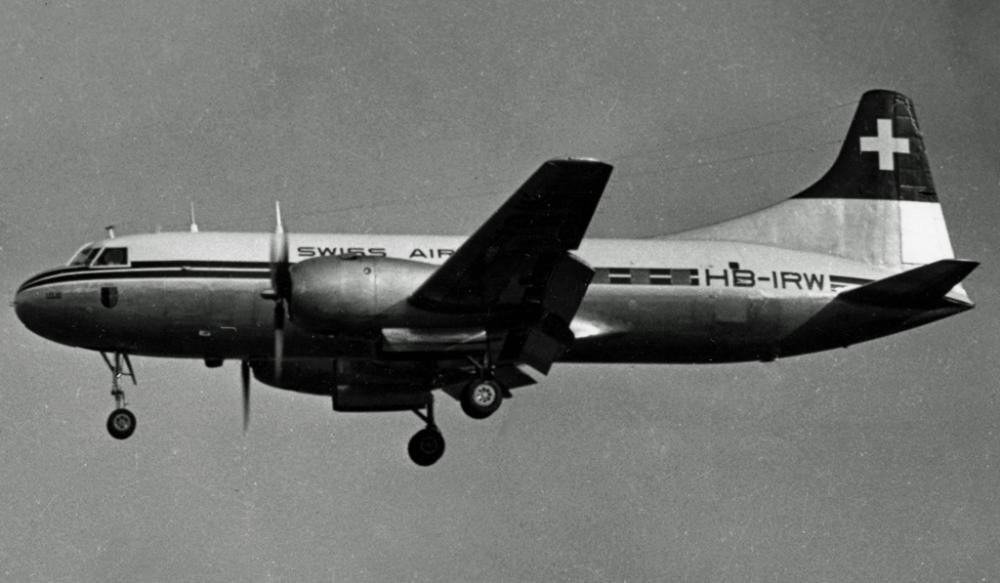
Swissair purchased the airline's first two Douglas DC-6B airliners for delivery in 1951. Swissair became the national flag carrier of Switzerland. The new pressurised aircraft were to replace the DC-4 on transatlantic routes.
In 1948 the airport in Dübendorf, which served as the base of Swissair, was relocated to Zurich-Kloten The next year Swissair plunged into a financial crisis due to a sudden devaluation of the British Pound because fares, except traffic to the United States, were calculated in British currency.
In 1952 the cabin layout on northern trans-Atlantic routes was changed to one with a first and a tourist class. In 1953 Swissair, with the city of Basel, founded a charter Company called Balair, reusing the name of one of its predecessors, a company which initially used older Swissair aircraft to fly to holiday destinations.
As the first European customer, Swissair bought the Douglas DC-7C in 1956 which enabled them to perform non-stop flights to the United States. For shorter-range routes, the Convair Metropolitan was used. In 1957 the Far East was added to the route network; direct flights to Tokyo had intermediate stops in Athens, Karachi, Bombay, Bangkok and Manila.
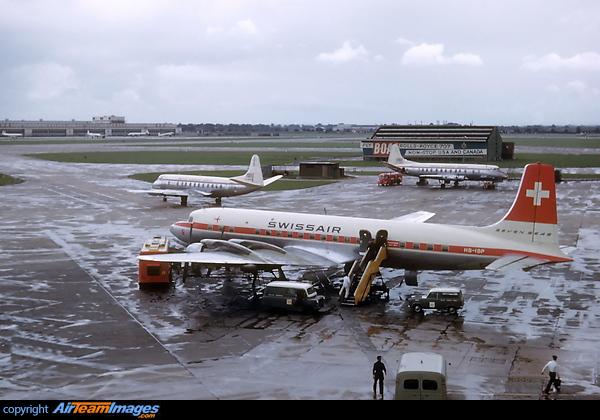
While competitors first looked at turboprop airplanes to replace their piston-engined craft, Swissair introduced jet airplanes directly. Together with SAS, Swissair bought Douglas DC-8s which were delivered beginning in 1960. For medium and short range routes the Sud Aviation Caravelle was purchased.
Swissair was one of the few companies worldwide to buy Convair 990 "Coronado" aircraft in 1962 for their medium and long range routes. Although the machines did not fulfil contractual specifications at first, they were liked by employees and customers. They operated on the airline's routes to South America, West Africa and the Middle and Far East. 1966 saw the introduction of the Douglas DC-9. This type developed into the backbone of the short- and medium-range routes.
In 1971 the first Boeing 747-200 Jumbo-Jet was acquired, and in the next year the first McDonnell Douglas DC-10-30 followed. Both types shaped the long-haul fleet until the 1990s. Swissair was the second European airline to offer service to the People's Republic of China, introducing service to Beijing and Shanghai in 1975. In the same year, Swissair was the launch customer for the DC-9-51. In 1977 Swissair was the launch customer for the third DC-9 type, now called the MD-80.
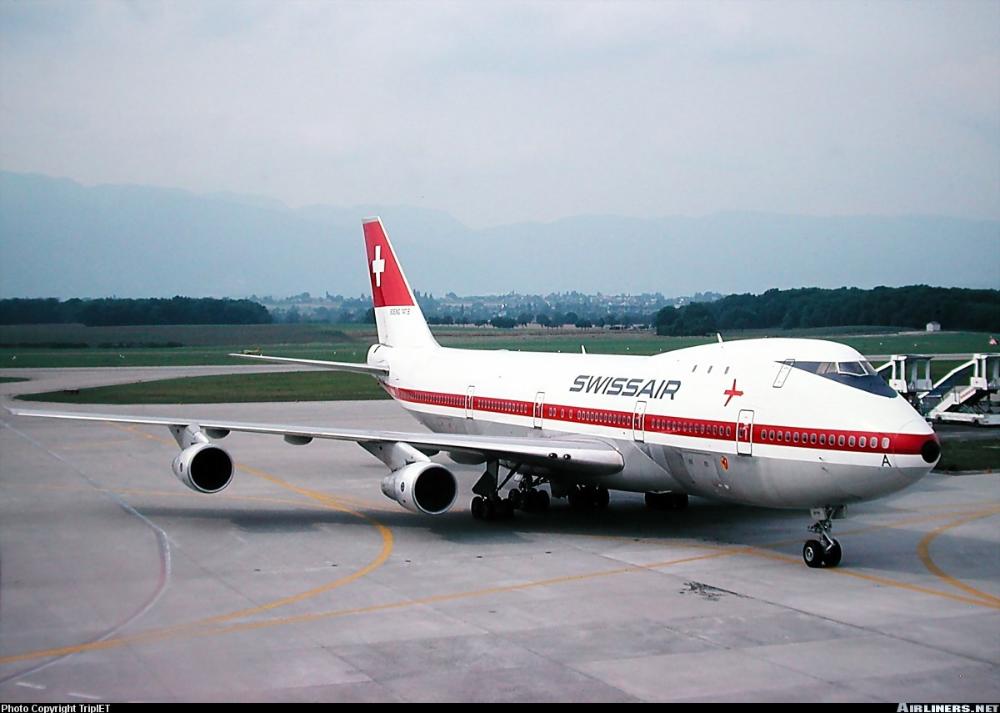
In 1979 Swissair was the first company to order the Airbus A310-200 and the jumbo jet variant with a stretched upper deck, the Boeing 747-300. Also, the Fokker 100 short range aircraft and the three-engined MD-11 were aircraft for which Swissair was the launch customer. 1983 saw the replacement of the older DC-9s by MD-83s.
With the beginning of deregulation and liberalisation, airlines felt growing financial pressure. In 1978, a regional airline named Crossair was founded, which put Swissair under additional stress. To counter these changes, Swissair invested their large financial reserves into takeovers and into flight-related trades like baggage handling, catering, aircraft maintenance and duty-free stores.
In 1990, together with SAS, Austrian Airlines and Finnair, the "European Quality Alliance" was founded. The latter alliance was later renamed to "Qualiflyer". Because of the weak economy, the Gulf War and its aftermath, and rising operational costs, many airlines lost money in 1990 and 1991. The ongoing liberalisation enforced the competition additionally, and Swissair lost 99 million Swiss Francs in the first half year. In the years 1991 and 1992 Swissair had to dissolve financial reserves to cushion the losses from the commercial aviation sector.
Like other airlines of smaller countries, Swissair now was under significant pressure. More and more national airlines affiliated themselves with airline alliances in order to maintain a worldwide market presence. To meet that goal, in 1993 an alliance between Swissair, KLM, SAS, and Austrian Airlines was proposed. But in various countries, this project was criticised.
In the late 1980s, as well as throughout the early 1990s, Swissair tried to merge with Air France, Lufthansa, and British Airways in order to get access to a wider European market. Finally after deregulation, Swissair tried to expand beyond its home Swiss market; after the Alcazar project was cancelled, Swissair hoped to be a major force in European aviation.
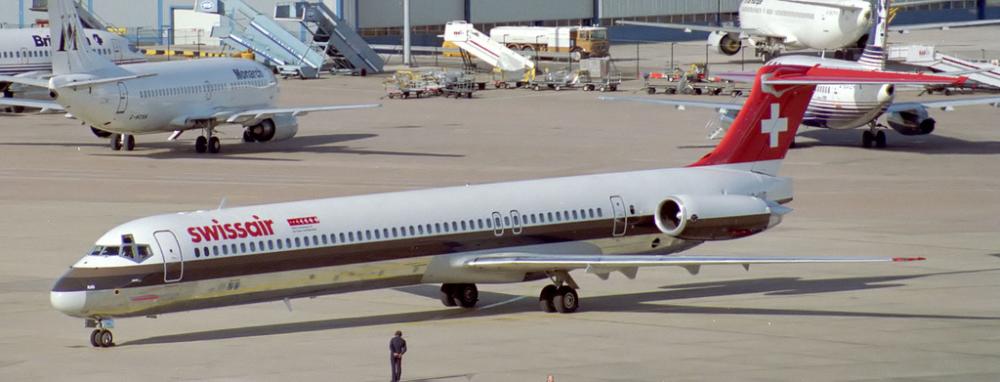
Swissair decided to acquire 49.5 percent of the very successful Italian charter airline Air Europe, the unprofitable Belgian flag carrier, Sabena, and significant stakes in the carriers Air Liberté, AOM, Air Littoral, Volare, LOT, Turkish Airlines, South African Airways, Portugália and LTU, and planned to acquire stakes in Aer Lingus, Finnair, Malév, as well as Brazilian carriers TAM and Transbrasil. It also received the first, and last wide-body, airliners that would join the fleet in the shape of the newer Airbus A330 which it used on long haul routes from 1998.
By mid-2000, it was predicted that Swissair would lose between CHF 3.25 billion and 4.45 billion over the next three fiscal years. The management however maintained in classical restructuring, the Board approved the reorganisation of LTU in the amount of approximately CHF 500 million. In addition, there were plans to take over Alitalia.
In summer 2000, the CEO Philippe Bruggisser came under public pressure, as the press published the financial situation of the group. Swissair and Sabena were each losing one million francs per day, and another million were lost every day at LTU and the French investments. Swissair looked to withdraw from their foreign investments.
In March 2001, two studies by consultants were presented to the Board, which showed the financial difficulties of SAirGroup. At this point, the Directors resigned. The buying spree created a major cash flow crisis for parent company SAirGroup, and was exacerbated by the environment caused by the September 11 attacks. Unable to make payments to creditors on its large debt, on 2 October 2001 the entire Swissair fleet was abruptly grounded. This led to the cancellation of over 230 flights, and thousands of passengers, as well a flight crews, being stranded around the world. Flight crew corporate credit cards were blocked by the banks, with some hotels expelling the crews, and having them return home at their own expense. In addition, all tickets sold were voided.
On the other side of the coin, Crossair shares were only reissued on the evening of 2 October due the rewriting of Crossair shares, with their purchase price not arriving until the following day – the setting of flight operations – into the SAirLines account.
SAirGroup's stake in Crossair was sold to the Swiss banks UBS and Credit Suisse. Furthermore, Crossair took over various assets of former Swissair, including its employees, aircraft and most European routes. Swissair and the SAirGroup were handed over to the liquidation firm of Jürg Hoss Liquidators, and ceased operations on 31 March 2002. Crossair was then renamed Swiss International Air Lines, or Swiss for short, and took over Swissair's intercontinental routes on 1 April 2002, officially ending 71 years of Swissair Service.
History source: Wikipedia.org
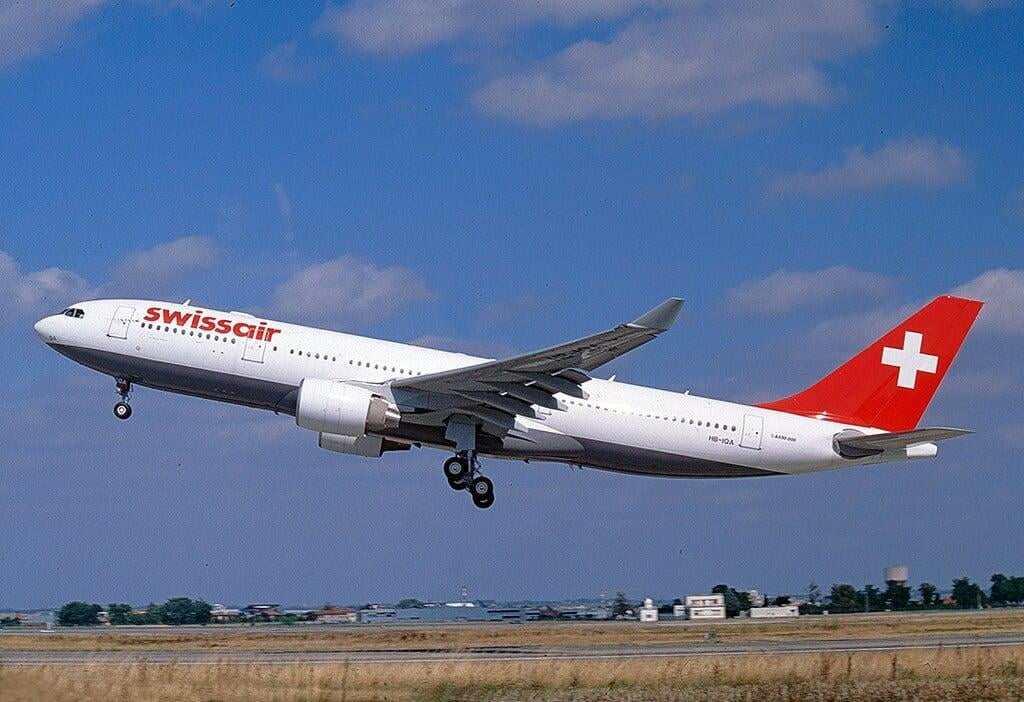
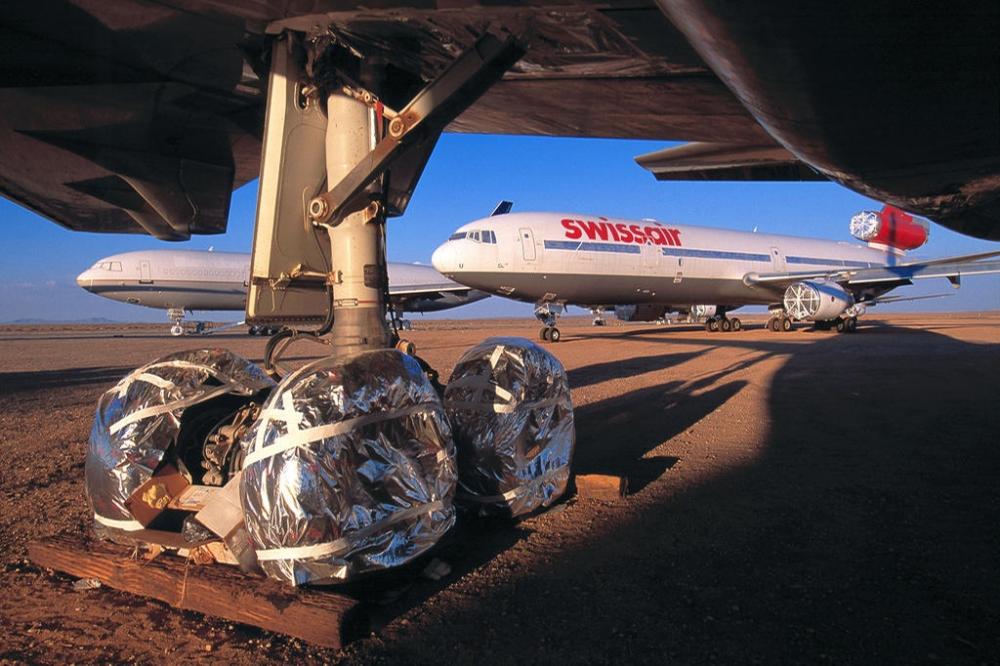

.png)